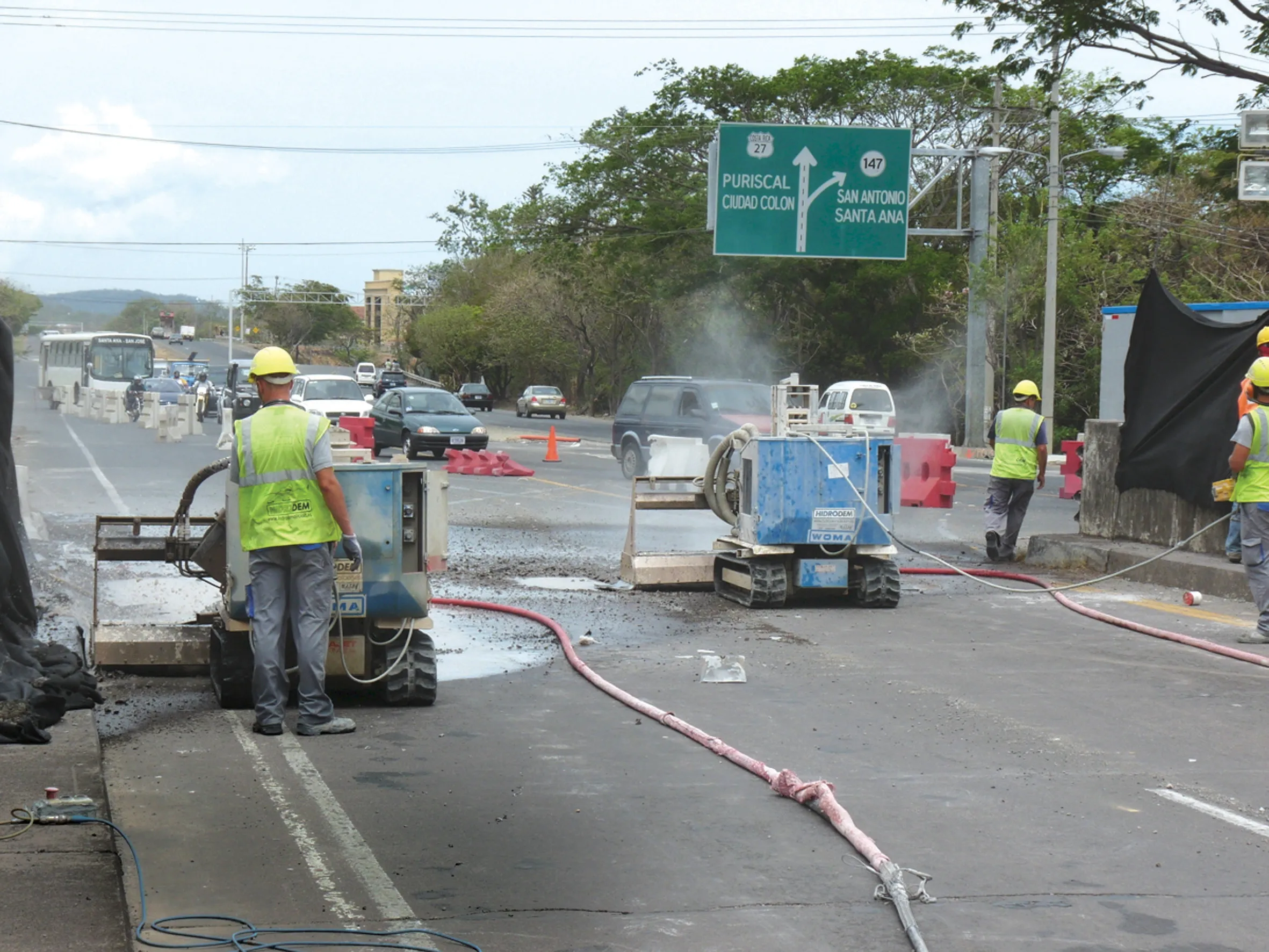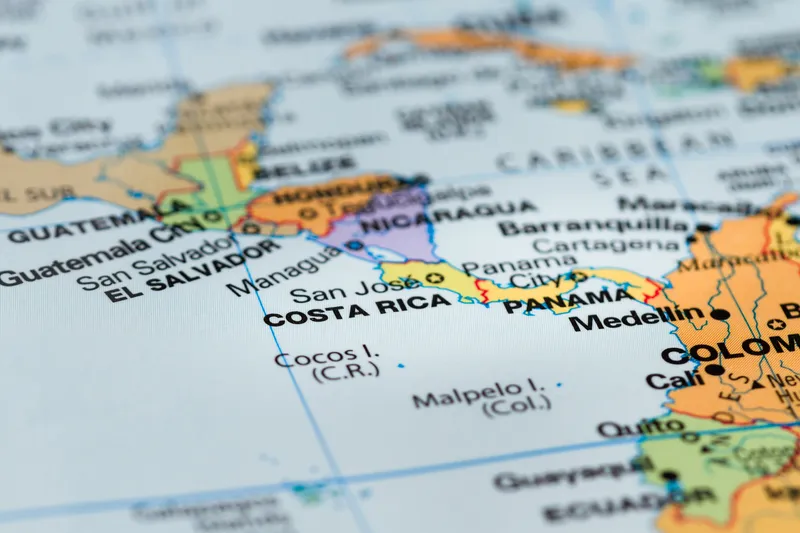Work has started on the long awaited San Jose-Caldera Highway in Costa Rica, following numerous delays and setbacks. The new 77.5km highway will be used daily by more than 81,000 vehicles, reducing the travel time between the Central Valley and the Central Pacific Coast by at least 30 minutes.
February 15, 2012
Read time: 4 mins

Work has started on the long awaited San Jose-Caldera Highway in Costa Rica, following numerous delays and setbacks. The new 77.5km highway will be used daily by more than 81,000 vehicles, reducing the travel time between the Central Valley and the Central Pacific Coast by at least 30 minutes.
It is the first public construction project in the country to be awarded to a foreign contractor by the Consejo Nacional de Concessions (866 CNC), part of the 2654 Ministerio de Obras Publicas y Transportes (MOPT).
Spain's1452 Autopistas del Sol will finance the total cost of the project recouping its investment through toll charges over 25 years, the first foreign company to be awarded a public sector contract in Costa Rica.
The new highway has been divided into three main sections with two incorporating existing roads: Route l (San José-Ciudad Colon) and Route lll (Oritina-Puntarenas) with the middle section, Route ll, being totally new and joining both sections. Both existing single-lane highways will, on completion of the project, have been upgraded to minimally dual carriageway in both directions.
Within Routes l and lll numerous bridges required upgrading to meet the new regulations and increased traffic volumes, with main contractor Constructora San José Caldera recognising the advantages of introducing hydrodemolition techniques for at least ten of the bridges.
As a result, Spanish hydrodemolition specialist1454 Hidrodem was appointed as a principal sub-contractor, introducing two 2784 Aquajet Systems' Aqua Cutter robots powered by high-pressure pumps. All the bridges had been constructed according to North American standards some 30 years ago and had been designed to accept reduced traffic densities.
A variety of refurbishment duties are, therefore, being undertaken on the bridges including roadway enlargement; improved road protection; increased asphalt depths; structure reinforcement, and improved girder post and pillars. All bridge slabs will also be thickened to accept the increased traffic densities.
The Aquajet Cutter robots "came into their own" on the concrete slab improvements and reinforcement, removing more than 800m³ of concrete to an average depth of 10cm. By using a high-pressure jet of water, the robot blasts the concrete without causing any damage to the structure or reinforcement bars. Each robot is fed by two water pumps, rated at 410kW and 522kW respectively, and delivering 196-227litres/minute at a pressure of 1,000 bar.
On this project each structure provided different characteristics and morphology to call for individual treatment, and Hidrodem adapted working parameters for each individual structure, ensuring minimal disruption for drivers using the live highway.
According to a spokesman for Hidrodem, the section between San José-Caldera posed important challenges in organisational and management skills and logistics. Throughout its three-month contract, equipment was moved constantly to ensure maximum utilisation along the route with one lane always open for access by the contractor. At what was possibly the busiest bridge, Puente de Escazu, the concrete slab was tackled in three 7.5m wide strips including the necessary curing and drying times for each strip. The Rio Agres Bridge also presented difficulties along both carriageways where the 90m bridges were reconfigured into a single six-lane bridge.
Meanwhile, on the Rio Jesus Maria Bridge, Hidrodem found that the concrete slab was below the minimum standard thickness of 15, cm. Hidrodem was able to use the Aquajet robots to remove the concrete without damaging the rebar, allowing concrete to be poured to a new standard thickness of 17cm. This together with the increased rebar provided a total thickness of 22cm thus meeting the new standard.
Despite work having been carried out ten years earlier with new concrete on the La Urca bridge, it failed today's building standards and the Aqua Cutters were also used to remove concrete (to allow additional rebar to be installed) to meet today's building standards. According to the spokesman for Hidrodem, the key factor of construction was the ability to meet the tight schedule on each of the bridge structures in such a short time, while allowing the highway to remain open. "And we were able to meet this tight schedule as a direct result of the productivity of the Aquajet hydrodemolition robots," he confirmed.
It is the first public construction project in the country to be awarded to a foreign contractor by the Consejo Nacional de Concessions (
Spain's
The new highway has been divided into three main sections with two incorporating existing roads: Route l (San José-Ciudad Colon) and Route lll (Oritina-Puntarenas) with the middle section, Route ll, being totally new and joining both sections. Both existing single-lane highways will, on completion of the project, have been upgraded to minimally dual carriageway in both directions.
Within Routes l and lll numerous bridges required upgrading to meet the new regulations and increased traffic volumes, with main contractor Constructora San José Caldera recognising the advantages of introducing hydrodemolition techniques for at least ten of the bridges.
As a result, Spanish hydrodemolition specialist
A variety of refurbishment duties are, therefore, being undertaken on the bridges including roadway enlargement; improved road protection; increased asphalt depths; structure reinforcement, and improved girder post and pillars. All bridge slabs will also be thickened to accept the increased traffic densities.
The Aquajet Cutter robots "came into their own" on the concrete slab improvements and reinforcement, removing more than 800m³ of concrete to an average depth of 10cm. By using a high-pressure jet of water, the robot blasts the concrete without causing any damage to the structure or reinforcement bars. Each robot is fed by two water pumps, rated at 410kW and 522kW respectively, and delivering 196-227litres/minute at a pressure of 1,000 bar.
On this project each structure provided different characteristics and morphology to call for individual treatment, and Hidrodem adapted working parameters for each individual structure, ensuring minimal disruption for drivers using the live highway.
According to a spokesman for Hidrodem, the section between San José-Caldera posed important challenges in organisational and management skills and logistics. Throughout its three-month contract, equipment was moved constantly to ensure maximum utilisation along the route with one lane always open for access by the contractor. At what was possibly the busiest bridge, Puente de Escazu, the concrete slab was tackled in three 7.5m wide strips including the necessary curing and drying times for each strip. The Rio Agres Bridge also presented difficulties along both carriageways where the 90m bridges were reconfigured into a single six-lane bridge.
Meanwhile, on the Rio Jesus Maria Bridge, Hidrodem found that the concrete slab was below the minimum standard thickness of 15, cm. Hidrodem was able to use the Aquajet robots to remove the concrete without damaging the rebar, allowing concrete to be poured to a new standard thickness of 17cm. This together with the increased rebar provided a total thickness of 22cm thus meeting the new standard.
Despite work having been carried out ten years earlier with new concrete on the La Urca bridge, it failed today's building standards and the Aqua Cutters were also used to remove concrete (to allow additional rebar to be installed) to meet today's building standards. According to the spokesman for Hidrodem, the key factor of construction was the ability to meet the tight schedule on each of the bridge structures in such a short time, while allowing the highway to remain open. "And we were able to meet this tight schedule as a direct result of the productivity of the Aquajet hydrodemolition robots," he confirmed.







